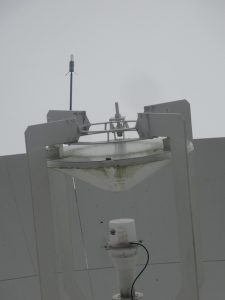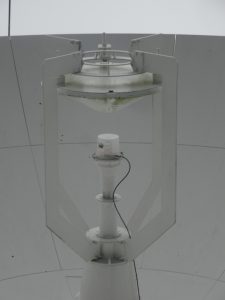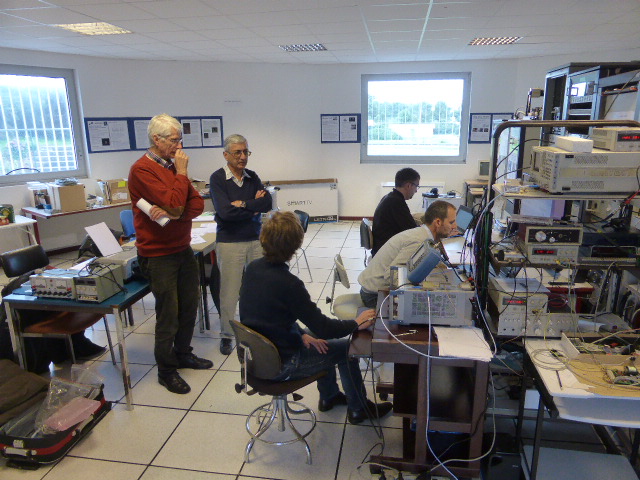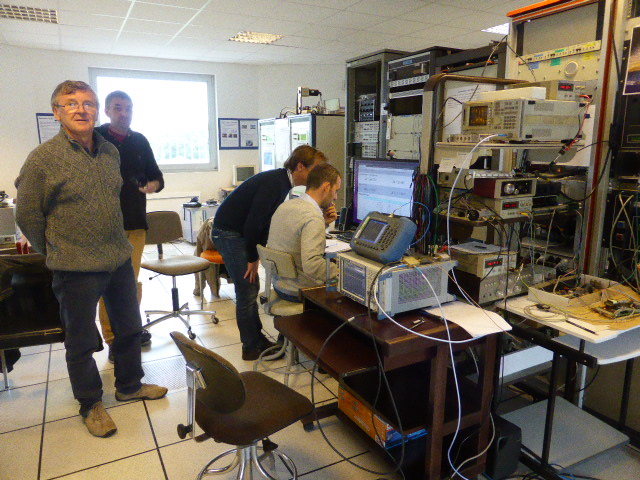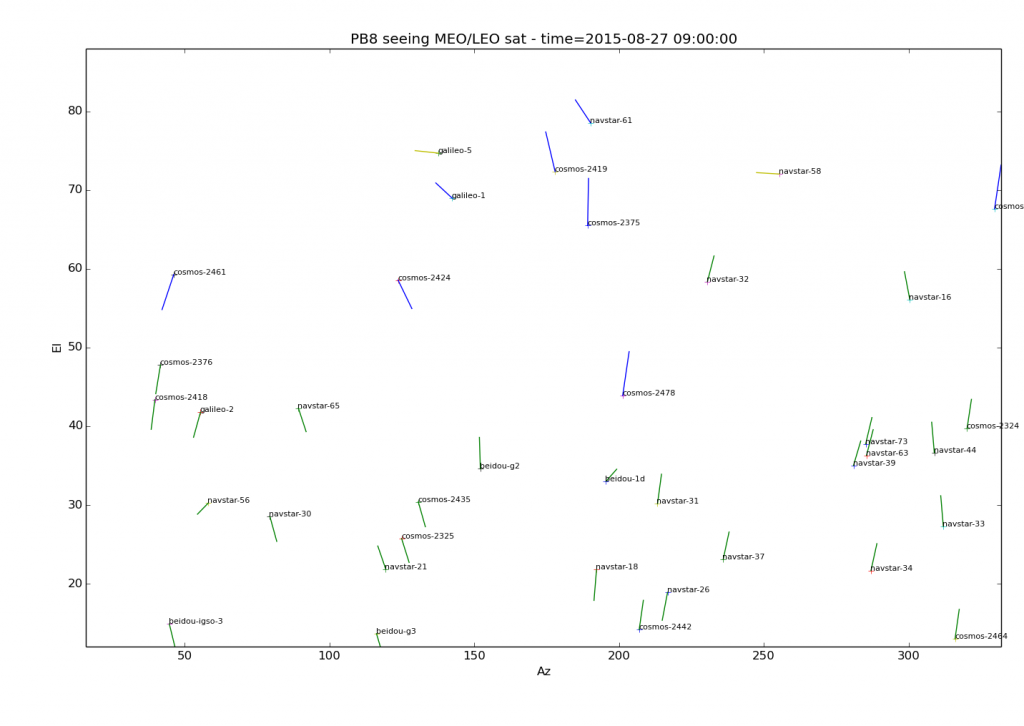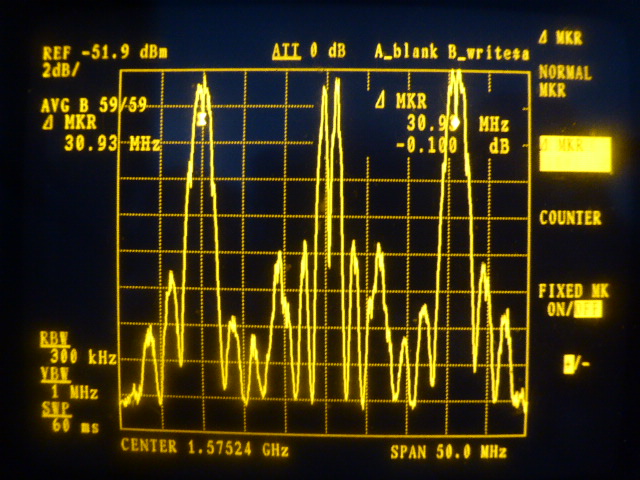In February this year we had a discussion with people from CNES about the opportunity to collect signals from GNSS satellites. PB8 is located in an ideal spot where electromagnetic pollution is limited compared to urban areas like Toulouse. In addition, there are not so many antennas of that size in that part of Europe (West) that could be dedicated to this task. It means that we could be able to collect data from extreme trajectories looking at the West.
GNSS (Galileo, GPS, Beidou, etc) satellites are transmitting in the L band (1100 – 1660 MHz). PB8 has not been designed for that purpose. The first challenge to overcome was to design and install a L band source at the focal point of the antenna.
During this summer Lucien designed such a source (1500 MHz center frequency, 200MHz bandwidth) and was installed two days ago on top of the C band horn.
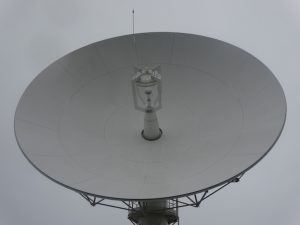 The focal point of the second reflector is 2 cm under the plane where the L band source is. So we know that PB8 should be a little bit blurred for that band.
The focal point of the second reflector is 2 cm under the plane where the L band source is. So we know that PB8 should be a little bit blurred for that band.
Today Lionel Ries and Romain Mathieu from CNES join us for running experiments using PB8 and their own materials. Measures will be collected simultaneously with a CNES antenna in Toulouse.
The following picture is view in real time of what PB8 is seeing (horizontal coordinates). GNSS positions are displayed as a velocity vector field (4 different colors). Green is for an easy tracking, blue means that it’s doable, and yellow/red reaches the limit of PB8 (considering the speed of the target projected on AZ or EL coordinates):
The following picture shows a frequency spectrum of the received signals when tracking IOV-FM-2 (Galileo):
These spectrum were collected during a 1-hour tracking, signals were very stable. We ran the same kind of experiments on BEIDOU3M2. But compared to the data collected simultaneously by CNES (Toulouse station), we have a 12dB loss.
To conclude, collecting signals from GNSS satellites can be achieved by PB8 (estimation of the trajectories, stability of the tracking over time). We have now to enhance the RF component of the chain to gain these missing dB.

